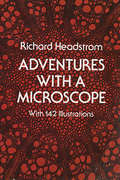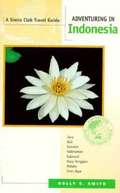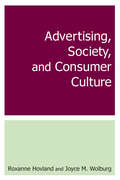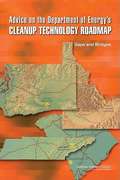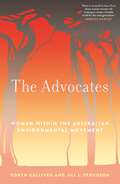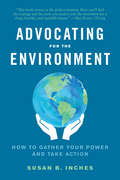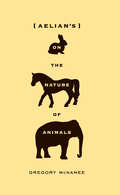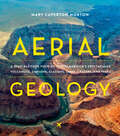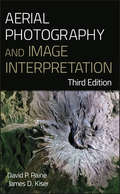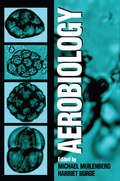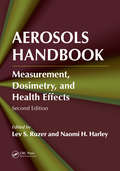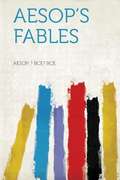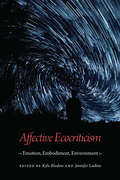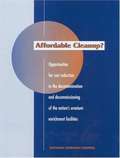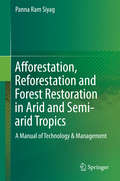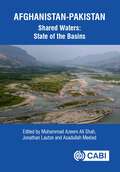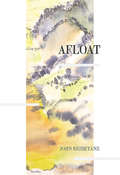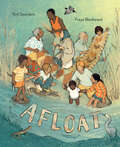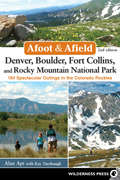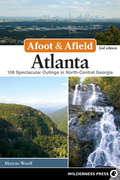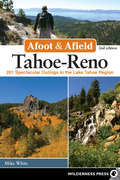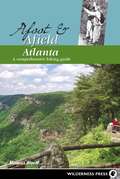- Table View
- List View
Adventures with a Microscope
by Richard HeadstromWith a simple microscope and this book, you can embark on 59 wonderful adventures in the natural world -- make discoveries about the structures of numerous microscopic animals; find out what everyday objects and foods really look like at the cellular level; gain an understanding of how to prepare specimens and slides; and learn about many scientific phenomena such as how a fly can walk upside down on the ceiling. It's all here in simple-to-understand language and 142 clear line drawings.The author first examines under the microscope such everyday objects as a human hair, air bubble, scale of a herring, poppy seed and sugar crystal, and then offers through-the-microscope views of such creatures and objects as the water flea, hydra, house fly, amoeba, euglena, volvox, diatoms, desmids, algae, blood corpuscles, honey bee, rotifer, water-mites, potato starch, and other food substances, lichen, paramecium, coffee, sponge, chalk, yeast, bacteria, mustard, pepper, bryozoan, moss, mushroom, molds, cotton, and other textile fibers, ferns, dragon-flies, flea, spider, roots, and other plant structures, paper, aphid, fingerprints, nervous system of the grasshopper, and more.Richard Headstrom, formerly associated with the New England Museum of Natural History and an experienced teacher and writer on natural science for young people, has made this book simple enough for any beginner at home as well as interesting for more experienced students and lay readers. Enjoyable and instructive, these adventures with a microscope will appeal to all who are curious about what there is to see beyond the range of the naked eye.
Adventures with a Texas Naturalist
by Rick Bass Roy Bedichek Ward LockwoodA classic since its first publication in 1947, Adventures with a Texas Naturalist distills a lifetime of patient observations of the natural world. This reprint contains a new introduction by noted nature writer Rick Bass.
Adventuring in Indonesia: Exploring the Natural Areas of the Pacific's Ring of Fire
by Holly S. SmithIn the latest addition to the Sierra Club Adventure Travel series, Holly Smith provides a wealth of savvy and sensitive advice on both outdoor and cultural opportunities in this enormously popular adventure destination.
Advertising, Society, and Consumer Culture
by Roxanne Hovland Joyce M. WolburgDesigned as a core textbook for courses in Advertising and Society, "Advertising, Society, and Consumer Culture" develops an integrated perspective that gives students a framework for understanding past, present, and future issues in advertising communications. Chapter contents cover the entire range of social, political, cultural, regulatory, and economic issues that surround advertising and its role in modern society. The many social issues addressed include advertising and gender stereotyping, advertising to vulnerable audiences, and the distribution of wealth in consumer society. "Advertising, Society, and Consumer Culture" intertwines the development of the consumer culture with its coverage of the historical, political, regulatory, and ethical issues of advertising. It includes clear, comprehensive tables that chronicle historical developments and key legal cases. The text is readable for undergraduates but provides enough depth to serve as a graduate-level text. Including extensive notes and a bibliography, it can be adopted independently, or alongside its companion volume, "Readings in Advertising, Society, and Consumer Culture".
Advice on the Department of Energy's CLEANUP TECHNOLOGY ROADMAP: Gaps and Bridges
by National Research Council of the National AcademiesBeginning with the Manhattan Project and continuing through the Cold War, the United States government constructed and operated a massive industrial complex to produce and test nuclear weapons and related technologies. When the Cold War ended, most of this complex was shut down permanently or placed on standby, and the United States government began a costly, long-term effort to clean up the materials, wastes, and environmental contamination resulting from its nuclear materials production. In 1989, Congress created the Office of Environmental Management (EM) within the Department of Energy (DOE) to manage this cleanup effort. Although EM has already made substantial progress, the scope of EM's future cleanup work is enormous. Advice on the Department of Energy's Cleanup Technology Roadmap: Gaps and Bridges provides advice to support the development of a cleanup technology roadmap for EM. The book identifies existing technology gaps and their priorities, strategic opportunities to leverage needed research and development programs with other organizations, needed core capabilities, and infrastructure at national laboratories and EM sites that should be maintained, all of which are necessary to accomplish EM's mission.
Advocates: Women within the Australian Environmental Movement
by Robyn Gulliver Jill L FergusonFrom boardrooms to blockade camps, from the lush East Gippsland forests to the golden Ningaloo Reef, the fight against environmental destruction takes place in many spaces. The Advocates tells the inside story of nine extraordinary women within the Australian environmental movement and the behind-the-scenes efforts that have helped power advocacy across Australia. Over the past fifty years these advocates have held corporations to account, cleaned up toxic waste in their own backyards, and returned biodiversity to our forests. They are not always on the frontlines of the fight or the front pages of the news, but their relentless commitment to making change is both moving and inspiring. In often unseen and unacknowledged ways these women have educated, agitated and pioneered new approaches to the many crises in the Australian environment. Told through richly detailed interviews, these stories get to the heart of why these women have dedicated their lives to environmental causes and the different ways they have persevered. The Advocates shines a light on nine women's tireless commitment to change, and what it means to be an Australian environmental advocate. These stories will inspire the next generation to find a place in that vital fight.
Advocating for the Environment: How to Gather Your Power and Take Action
by Susan InchesAn accessible, solutions-oriented guide for addressing the earth's environmental crisis and enacting meaningful changeWhat can we as ordinary citizens do about climate change?" While countless environmental books focus on the causes of our current crisis, Advocating for the Environment is one of the first to focus on advocacy and policy-based solutions, arming readers with the tools they need to take action and enact change. In Part I, environmental policy expert Susan Inches discusses storytelling, empathy, mindset, and how effective communication can help us collaborate with others, even those with opposing views. Part II focuses on practical skills like coalition building, media relations, communication strategy, and navigating political and bureaucratic obstacles that block large-scale legislation. The book also includes case studies, research, and templates to deepen learning. Professors and teachers, students, legislators, environmental clubs, and church groups will also find useful ideas and strategies on every page.
Aelian's On the Nature of Animals
by Gregory McnameeNot much can be said with certainty about the life of Claudius Aelianus, known to us as Aelian. He was born sometime between A.D. 165 and 170 in the hill town of Praeneste, what is now Palestrina, about twenty-five miles from Rome, Italy. He grew up speaking that town's version of Latin, a dialect that other speakers of the language seem to have found curious, but-somewhat unusually for his generation, though not for Romans of earlier times-he preferred to communicate in Greek. Trained by a sophist named Pausanias of Caesarea, Aelian was known in his time for a work called Indictment of the Effeminate, an attack on the recently deceased emperor Marcus Aurelius Antoninus, who was nasty even by the standards of Imperial Rome. He was also fond of making almanac-like collections, only fragments of which survive, devoted to odd topics such as manifestations of the divine and the workings of the supernatural.His De Natura Animalium (On the Nature of Animals) has a similar patchwork quality, but it was esteemed enough in his time to survive more or less whole, and it is about all that we know of Aelian's work today. A mostly randomly ordered collection of stories that he found interesting enough to relate about animals-whether or not he believed them-Aelian's book constitutes an early encyclopedia of animal behavior, affording unparalleled insight into what ancient Romans knew about and thought about animals-and, of particular interest to modern scholars, about animal minds.If the science is sometimes sketchy, the facts often fanciful, and the history sometimes suspect, it is clear enough that Aelian had a fine time assembling the material, which can be said, in the most general terms, to support the notion of a kind of intelligence in nature and that extends human qualities, for good and bad, to animals. His stories, which extend across the known world of Aelian's time, tend to be brief and to the point, and many return to a trenchant question: If animals can respect their elders and live honorably within their own tribes, why must humans be so appallingly awful?Aelian is as brisk, as entertaining, and as scholarly a writer as Pliny, the much better known Roman natural historian. That he is not better known is simply an accident: he has not been widely translated into English, or indeed any European language. This selection from his work will introduce readers to a lively mind and a witty writer who has much to tell us.
Aelian's On the Nature of Animals
by Gregory McnameeNot much can be said with certainty about the life of Claudius Aelianus, known to us as Aelian. He was born sometime between A.D. 165 and 170 in the hill town of Praeneste, what is now Palestrina, about twenty-five miles from Rome, Italy. He grew up speaking that town's version of Latin, a dialect that other speakers of the language seem to have found curious, but-somewhat unusually for his generation, though not for Romans of earlier times-he preferred to communicate in Greek. Trained by a sophist named Pausanias of Caesarea, Aelian was known in his time for a work called Indictment of the Effeminate, an attack on the recently deceased emperor Marcus Aurelius Antoninus, who was nasty even by the standards of Imperial Rome. He was also fond of making almanac-like collections, only fragments of which survive, devoted to odd topics such as manifestations of the divine and the workings of the supernatural.His De Natura Animalium (On the Nature of Animals) has a similar patchwork quality, but it was esteemed enough in his time to survive more or less whole, and it is about all that we know of Aelian's work today. A mostly randomly ordered collection of stories that he found interesting enough to relate about animals-whether or not he believed them-Aelian's book constitutes an early encyclopedia of animal behavior, affording unparalleled insight into what ancient Romans knew about and thought about animals-and, of particular interest to modern scholars, about animal minds.If the science is sometimes sketchy, the facts often fanciful, and the history sometimes suspect, it is clear enough that Aelian had a fine time assembling the material, which can be said, in the most general terms, to support the notion of a kind of intelligence in nature and that extends human qualities, for good and bad, to animals. His stories, which extend across the known world of Aelian's time, tend to be brief and to the point, and many return to a trenchant question: If animals can respect their elders and live honorably within their own tribes, why must humans be so appallingly awful?Aelian is as brisk, as entertaining, and as scholarly a writer as Pliny, the much better known Roman natural historian. That he is not better known is simply an accident: he has not been widely translated into English, or indeed any European language. This selection from his work will introduce readers to a lively mind and a witty writer who has much to tell us.
Aerial Geology: A High-Altitude Tour of North America’s Spectacular Volcanoes, Canyons, Glaciers, Lakes, Craters, and Peaks
by Mary Caperton Morton“Get your head into the clouds with Aerial Geology.” —The New York Times Book ReviewAerial Geology is an up-in-the-sky exploration of North America’s 100 most spectacular geological formations. Crisscrossing the continent from the Aleutian Islands in Alaska to the Great Salt Lake in Utah and to the Chicxulub Crater in Mexico, Mary Caperton Morton brings you on a fantastic tour, sharing aerial and satellite photography, explanations on how each site was formed, and details on what makes each landform noteworthy. Maps and diagrams help illustrate the geological processes and clarify scientific concepts. Fact-filled, curious, and way more fun than the geology you remember from grade school, Aerial Geology is a must-have for the insatiably curious, armchair geologists, million-mile travelers, and anyone who has stared out the window of a plane and wondered what was below.
Aerial Photography and Image Interpretation
by James D. Kiser David P. PaineThe new, completely updated edition of the aerial photography classicExtensively revised to address today's technological advances, Aerial Photography and Image Interpretation, Third Edition offers a thorough survey of the technology, techniques, processes, and methods used to create and interpret aerial photographs. The new edition also covers other forms of remote sensing with topics that include the most current information on orthophotography (including digital), soft copy photogrammetry, digital image capture and interpretation, GPS, GIS, small format aerial photography, statistical analysis and thematic mapping errors, and more. A basic introduction is also given to nonphotographic and space-based imaging platforms and sensors, including Landsat, lidar, thermal, and multispectral. This new Third Edition features:Additional coverage of the specialized camera equipment used in aerial photographyA strong focus on aerial photography and image interpretation, allowing for a much more thorough presentation of the techniques, processes, and methods than is possible in the broader remote sensing texts currently availableStraightforward, user-friendly writing styleExpanded coverage of digital photographyTest questions and summaries for quick review at the end of each chapterWritten in a straightforward style supplemented with hundreds of photographs and illustrations, Aerial Photography and Image Interpretation, Third Edition is the most in-depth resource for undergraduate students and professionals in such fields as forestry, geography, environmental science, archaeology, resource management, surveying, civil and environmental engineering, natural resources, and agriculture.
Aerobiology
by Michael L. Muilenberg Harriet A. BurgeAerobiology is the study of airborne particles that have an impact on humans and other organisms. Every day, we are exposed to airborne particles, including "natural" particles such as pollen, bacteria, and fungi, and "unnatural" particles, such as asbestos fibers and noxious chemicals. Aerobiology highlights the current interests in this field, primarily the ecology and distribution of airborne particles and their effects on health.
Aerosols Handbook: Measurement, Dosimetry, and Health Effects, Second Edition
by Lev S. Ruzer Naomi H. HarleyWith the rapid growth of the nanotechnology industry, the need to understand the biological effects of aerosol exposure has become increasingly important. Featuring contributions by leading experts in the field, Aerosols Handbook: Measurement, Dosimetry, and Health Effects, Second Edition offers an up-to-date overview of many aspects of aerosols, f
Aesop's Fables
by AesopAESOP'S Fables is a collection of tales from the Greek story teller, Aesop. Most of the characters in his stories are animals, some of which take on human characteristic and are personified in ways of speech and emotions. Each fable has an accompanying moral to be learned from the tale.
Aesthetic Sustainability: Product Design and Sustainable Usage (Routledge Studies in Sustainability)
by Kristine H. HarperWhy do we readily dispose of some things, whereas we keep and maintain others for years, despite their obvious wear and tear? Can a greater understanding of aesthetic value lead to a more strategic and sustainable approach to product design? Aesthetic Sustainability: Product Design and Sustainable Usage offers guidelines for ways to reduce, rethink, and reform consumption. Its focus on aesthetics adds a new dimension to the creation, as well as the consumption, of sustainable products. The chapters offer innovative ways of working with expressional durability in the design process. Aesthetic Sustainability: Product Design and Sustainable Usage is related to emotional durability in the sense that the focus is on the psychological and sensuous bond between subject and object. But the subject–object connection is based on more than emotions: aesthetically sustainable objects continuously add nourishment to human life. This book explores the difference between sentimental value and aesthetic value, and it offers suggestions for operational approaches that can be implemented in the design process to increase aesthetic sustainability. This book also offers a thorough presentation of aesthetics, focusing on the correlation between the philosophical approach to the aesthetic experience and the durable design experience. The book is of interest to students and scholars working in the fields of design, arts, the humanities and social sciences; additionally, it will speak to designers and other professionals with an interest in sustainability and aesthetic value.
Affective Ecocriticism: Emotion, Embodiment, Environment
by Kyle Bladow Jennifer LadinoScholars of ecocriticism have long tried to articulate emotional relationships to environments. Only recently, however, have they begun to draw on the complex interdisciplinary body of research known as affect theory. Affective Ecocriticism takes as its premise that ecocritical scholarship has much to gain from the rich work on affect and emotion happening within social and cultural theory, geography, psychology, philosophy, queer theory, feminist theory, narratology, and neuroscience, among others. This vibrant and important volume imagines a more affective—and consequently more effective—ecocriticism, as well as a more environmentally attuned affect studies. These interdisciplinary essays model a range of approaches to emotion and affect in considering a variety of primary texts, including short story collections, films, poetry, curricular programs, and contentious geopolitical locales such as Canada’s Tar Sands. Several chapters deal skeptically with familiar environmentalist affects like love, hope, resilience, and optimism; others consider what are often understood as negative emotions, such as anxiety, disappointment, and homesickness—all with an eye toward reinvigorating or reconsidering their utility for the environmental humanities and environmentalism. Affective Ecocriticism offers an accessible approach to this theoretical intersection that will speak to readers across multiple disciplinary and geographic locations.
Affordable Cleanup?: Opportunities for cost reduction in the decontamination and decommissioning of the nation's uranium enrichment facilities
by Committee on Decontamination Decommissioning of Uranium Enrichment FacilitiesThe Energy Policy Act of 1992 called on the National Academy of Sciences to conduct a study and provide recommendations for reducing the costs of decontaminating and decommissioning (D&D) the nation's uranium enrichment facilities located at Oak Ridge, Tennessee; Raducah, Kentucky; and Portsmouth, Ohio. This volume examines the existing plans and cost estimates for the D&D of these facilities, including such elements as technologies, planning and management, and identifies approaches that could reduce D&D costs. It also assesses options for disposition of the large quantities of depleted uranium hexafluoride that are stored at these sites.
Afforestation, Reforestation and Forest Restoration in Arid and Semi-arid Tropics: A Manual of Technology & Management
by Panna Ram SiyagThe book is a comprehensive manual of practice for execution of afforestation and tree planting programmes in arid and semi-arid tropics. It includes a compact running account of the technology of afforestation and the relevant principles and practices in management of afforestation projects. It provides a wide range of structured information and a number of model designs which can be gainfully put to use by the field level supervisors as also by the managers concerned with planning and control of such projects. Written by a practising specialist, the book is invaluable for anyone concerned with the practice of afforestation and tree planting, be he a tree hobbyist or a school teacher, a professional forester or a senior policy maker in government, an industrialist or a philanthropist, an environmental activist or a member of a community service organization.
Afghanistan-Pakistan Shared Waters: State of the Basins
by Arif Anwar Shakeel Hayat Alias Wardak Fazilda Nabeel Hassaan Furqan Inayatullah Jan Karthikeyan Matheswaran Marie-Charlotte Buisson Muhammad Shahid Iqbal Muhammad Tousif Bhatti Muhammad Zia Hashmi Mujib Ahmad Azizi Paul Pavelic Taimoor AkhtarThere is currently no water cooperation between Afghanistan and Pakistan. Of the nine rivers that flow across the border, none possess a formal agreement or mechanism to manage shared water resources. Further, there is very little information available about the status of environment, hydrology and water resources management for these river basins that could be used as a starting point for dialogues on transboundary water coordination. This State of the Basins book co-develops an overview of the three most important river basins, in collaboration with international experts and water professionals from Afghanistan and Pakistan. It covers water resources, land resources, ecological health, environment, climate change, and the social and economic conditions for sustainable management of these precious resources. It will inform decision making within the two countries, and begin to establish benefits that can accrue from more active collaboration on these shared waters. This book: · Focuses on portions of the Indus shared by Afghanistan and Pakistan. · Features extensive engagement and co-development with Afghan and Pakistani professionals. · Is the first book on the shared waters in the Indus, developed in the context of regional realities associated with post-August 2021 Taliban takeover. The book is aimed at students and researchers in water rights and resources, and government decision makers, private sector investors, donors, intermediary organizations that work directly with farmers, researchers and students. It is a reference book for graduate students and researchers working on these basins, and on transboundary river basin management in Asia and beyond.
Afloat
by John ReibetanzAfloat, John Reibetanz's eighth collection of poetry, focuses on water in many manifestations. The centerpiece, a sequence on the Three Gorges Dam and its cultural and environmental implications, brings ancient Chinese sources (Meng Chiao and the painter Dong Yuan) together with modern ones (Edward Burtynsky's photographs and violent video games) to create an elegy that is moving and meditative. Although water is everywhere present as a subject, it is song that provides the motivating power, the vehicle of longing that animates the book. "We thirst for song"—the closing words of the Lament for the Gorges sequence—could really serve as the book's epigraph. This is poetry exercising its full range of possible functions (to observe, to enquire, to elegize, to imagine, to think, to commemorate, to yearn and to feel), all in the service of that "thirst for song."
Afloat
by Kirli SaundersA powerful picture book story for our time of climate crisis interwoven with Indigenous wisdom.From multi-award-winning Gunai author Kirli Saunders and Kate Greenaway Medal-winner Freya Blackwood comes Afloat. Against a backdrop of a changed environment, an Elder leads a child along the waterways, sharing her People’s knowledge and gathering community along the way. This uplifting and inspiring picture book uses the practice of weaving as a powerful metaphor for the honoring and teaching of First Nations wisdom, and the coming together of all people to survive, thrive, and create a more hopeful future.
Afoot & Afield Denver, Boulder, Fort Collins, and Rocky Mountain Naitonal Park
by Alan Apt Kay TurnbaughAfoot and Afield: Denver, Boulder, Fort Collins, and Rocky Mountain National Park includes 184 carefully chosen routes that can be used for not only hiking, but, in some cases, mountain biking, and backpacking.
Afoot & Afield: Atlanta 2e
by Marcus WoolfAfoot & Afield: Atlanta details more than 105 of the best hikes within a two-hour drive of Atlanta, including backcountry treks, day hikes, battlefield walks and urban treks. The book includes outings appropriate for everyone, from families and children to experienced backpackers.
Afoot & Afield: Tahoe-Reno 2e
by Mike WhiteThe most comprehensive hiking guide to the Reno and Tahoe area with more than 175 of the best hikes described by veteran guidebook author Mike White. 26 new hikes added in this edition.
Afoot and Afield: Atlanta
by Marcus WoolfCovers the abundance of natural areas within a two-hour drive of the city in 100 hikes, from challenging backcountry treks in the north Georgia mountains to easy dayhikes along the Chattahoochee River. The diverse trails pass through parks where families can observe wildlife, historical sites and old battlefields, and one of the largest wilderness areas in the Southeast. Highlights summarize each trip's best features, and at-a-glance essential information-distance, time, elevation change, and difficulty rating-makes it easy to choose the right outing. Maps with GPS waypoints indicate notable spots on the trail such as junctions, scenic overlooks, wildlife observation platforms, and backcountry campsites.
